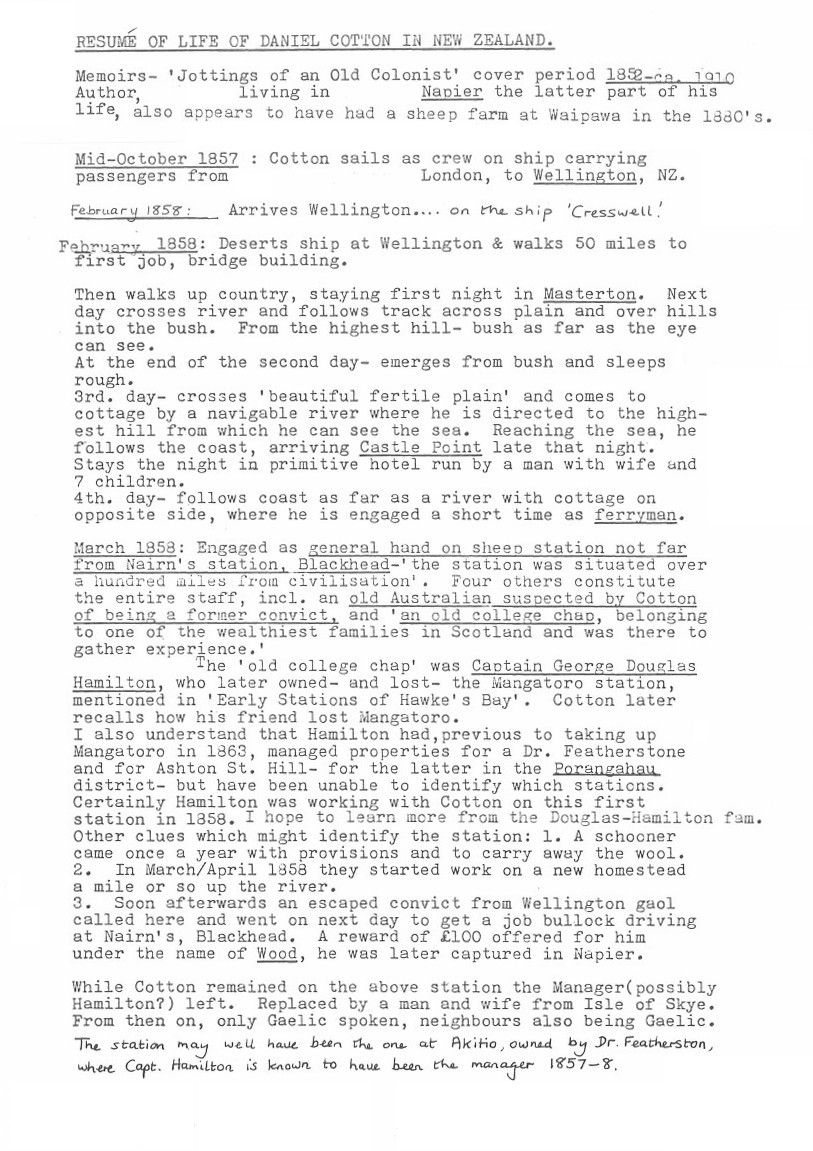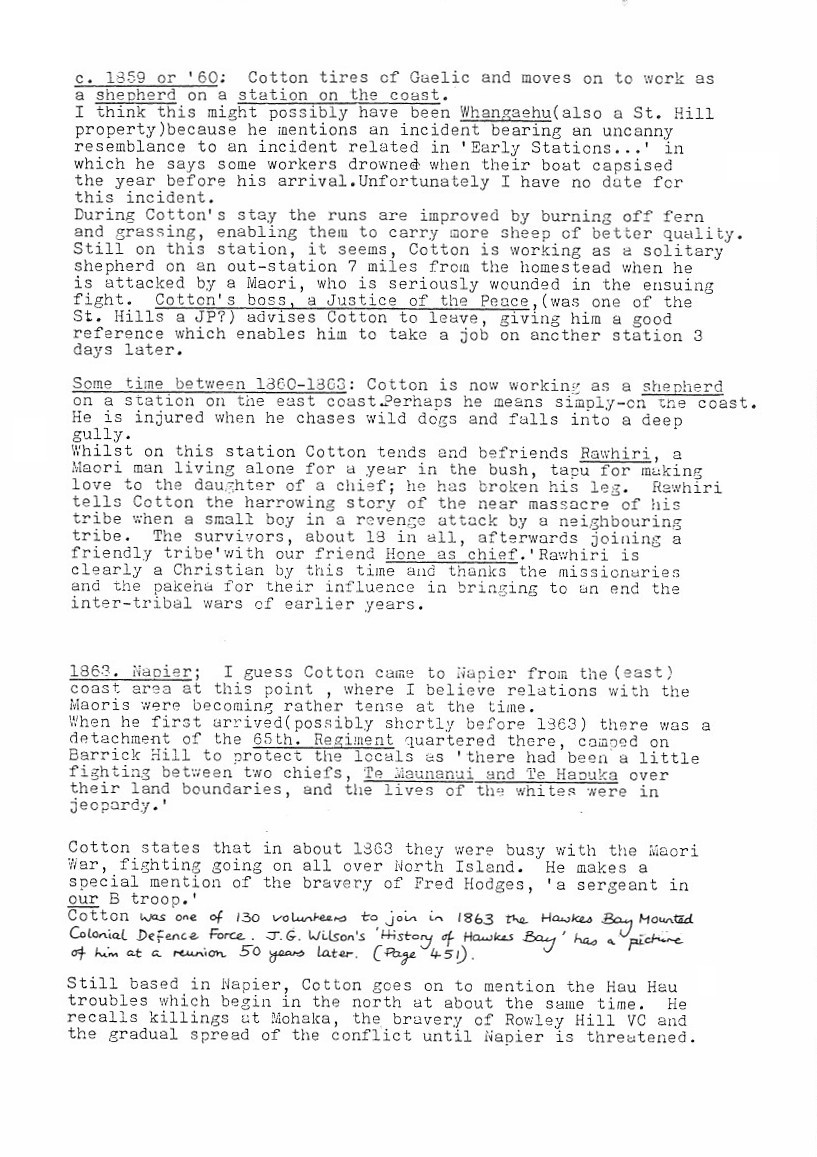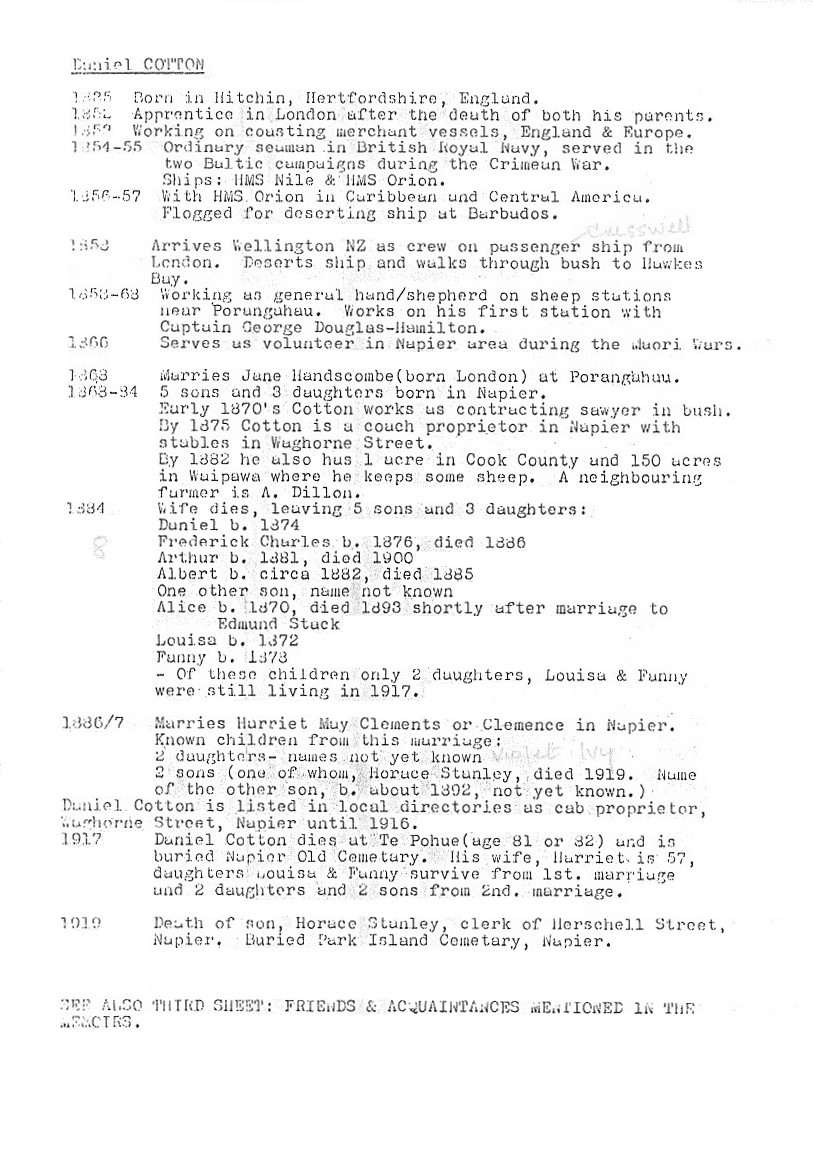RESUMÉ OF LIFE OF DANIEL COTTON IN NEW ZEALAND.
Memoirs – ‘Jottings of an Old Colonist’ cover period 1852 – ca. 1910
Author, living in Napier the latter part of his life, also appears to have had a sheep farm at Waipawa in the 1880’s.
Mid-October 1857: Cotton sails as crew on ship carrying passengers from London, to Wellington, NZ.
February 1858: Arrives Wellington….on the ship ‘Cresswell’.
February 1858: Deserts ship at Wellington & walks 50 miles to first job, bridge building.
Then walks up country, staying first night in Masterton. Next day crosses river and follows track across plain and over hills into the bush. From the highest hill – bush as far as the eye can see.
At the end of the second day – emerges from bush and sleeps rough.
3rd. day – crosses ‘beautiful fertile plain’ and comes to cottage by a navigable river where he is directed to the highest hill from which he can see the sea. Reaching the sea, he follows the coast, arriving Castle Point late that night.
Stays the night in primitive hotel run by a man with wife and 7 children.
4th. Day – follows coast as far as a river with cottage on opposite side, where he is engaged a short time as ferryman.
March 1858: Engaged as general hand on sheep station not far from Nairn’s station, Blackhead – ‘the station was situated over a hundred miles from civilisation’. Four others constitute the entire staff, incl. an old Australian suspected by Cotton of being a former convict, and ‘an old college chap, belonging to one of the wealthiest families in Scotland and was there to gather experience.’
The ‘old college chap’ was Captain George Douglas Hamilton, who later owned – and lost – the Mangatoro station, mentioned in ‘Early stations of Hawke’s Bay’. Cotton later recalls how his friend lost Mangatoro.
I also understand that Hamilton had, previous to taking up Mangatoro in 1863, managed properties for a Dr. Featherstone and for Ashton St. Hill – for the latter in the Porangahau district – but have been unable to identify which stations. Certainly Hamilton was working with Cotton on this first station in 1858. I hope to learn more from the Douglas-Hamilton fam.
Other clues which might identify the station: 1. A schooner came once a year with provisions and to carry away the wool.
2. In March/April 1858 they started work on a new homestead a mile or so up the river.
3. Soon afterwards an escaped convict from Wellington gaol called here and went on next day to get a job bullock driving at Nairn’s, Blackhead. A reward of £100 offered for him under the name of Wood, he was later captured in Napier.
While Cotton remained on the above station the Manager (possibly Hamilton?) left. Replaced by a man and wife from Isle of Skye. From then on, only Gaelic spoken, neighbours also being Gaelic. The station may well have been the one at Akitio, owned by Dr. Featherstone, where Capt. Hamilton is known to have been the manager 1857-8.
















Do you know something about this record?
Please note we cannot verify the accuracy of any information posted by the community.